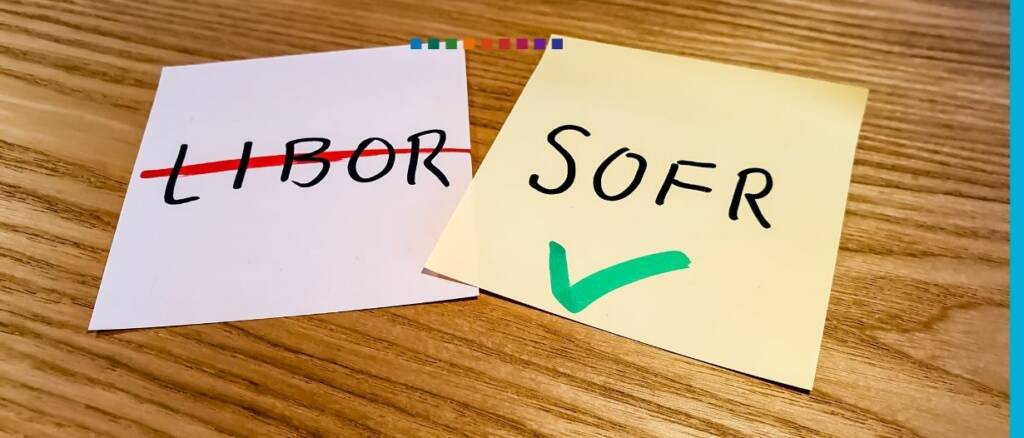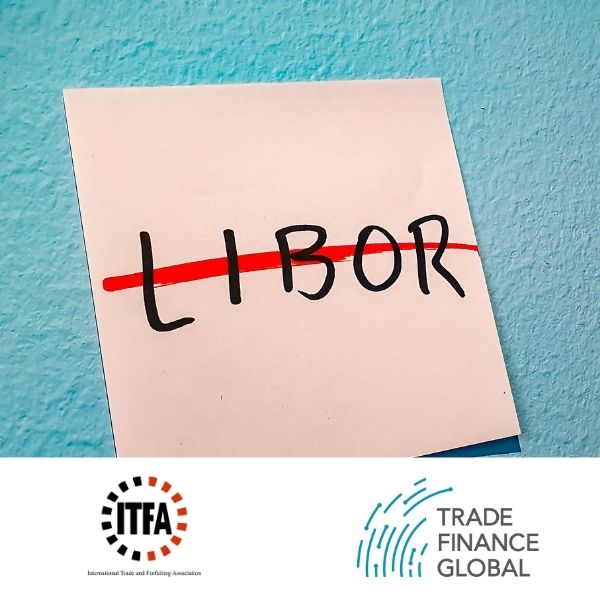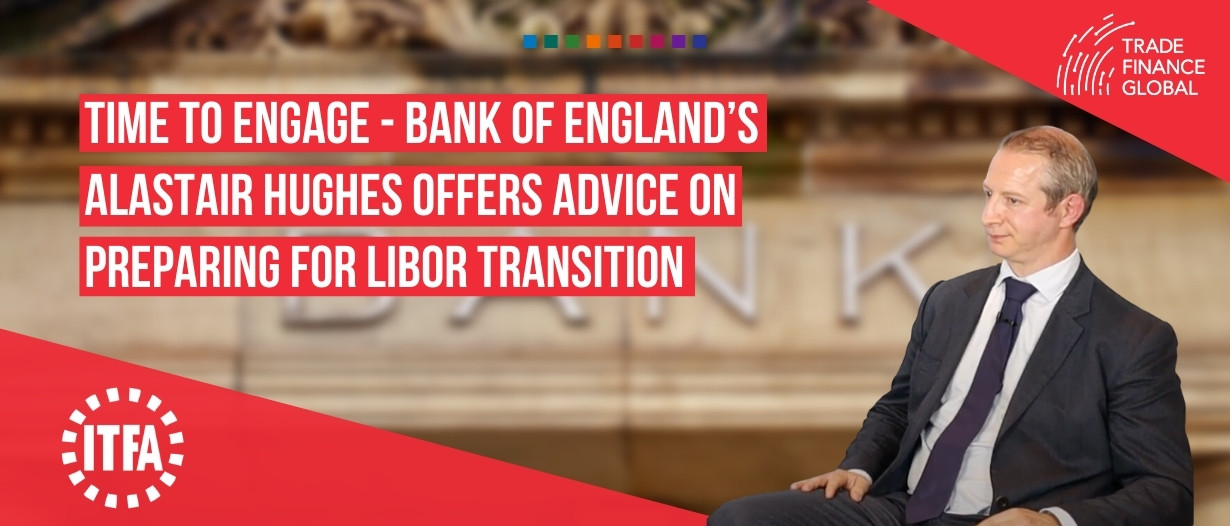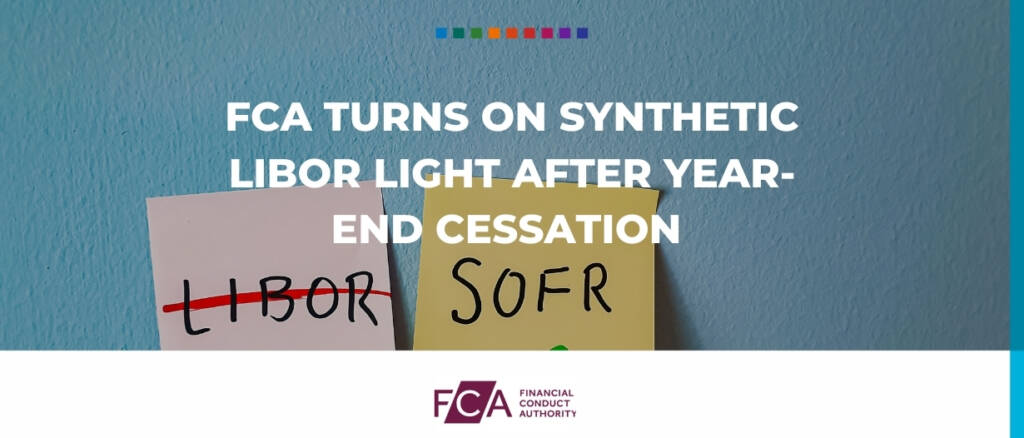The cessation of the London Interbank Offered Rate, or LIBOR, will be one of the most important events affecting trade finance this year.
Often referred to as the “world’s most important number”, LIBOR is the benchmark interest rate at which major global banks lend to each other, and it has been in place since the 1970s.
However, as Trade Finance Global (TFG) has previously reported, references to LIBOR will cease for new and existing contracts across all currencies at the end of 2021.
A mixture of alternatives are lined up to replace it – such as the Secured Overnight Financing Rate (SOFR), the Sterling Overnight Index Average (SONIA), and even the synthetic LIBOR based on “risk-free rates” – but what do all these terms mean?
For trade financiers, the transition might be complex and challenging, but as the Bank of England’s (BoE) Alastair Hughes told TFG, it is imperative that they engage with the changes and understand the implications.
As a senior advisor to the BoE’s Markets Directorate, Hughes is currently leading the bank’s work on risk-free rate transition.
“I work in the markets area of the bank, and one of the things we look at is market structure, and making sure there are fair and efficient markets for everyone in the UK,” said Hughes.
“One aspect of that is financial benchmarks, particularly the LIBOR benchmark – which is necessarily coming to an end – and we work to try and help businesses and end-users move away from the LIBOR rate as swiftly and safely as possible.”

LIBOR – the $400-trillion dinosaur
The idea for LIBOR emerged in the syndicated lending market in the late 1960s, before being introduced in the 1970s.
The idea was to have a benchmark or reference rate that reflected banks’ cost of funding, and would therefore reflect the interbank funding market.
“Benchmarks are really important,” said Hughes. “They provide transparency and consistency, and they provide somewhere where we can coalesce and manage risk, and ultimately that reduces costs for people, which is a good thing in markets.”
In the intervening decades, LIBOR has since grown to service over $400 trillion worth of contracts, and it has become deeply embedded in the global financial system.
But its use has also spread much wider than was originally intended, having grown to cover products such as mortgages, lending, and derivatives.
As Hughes explains, LIBOR has thus drifted from its original purpose in the interbanks markets, and has become increasingly redundant.
Much of the market on which LIBOR was originally based is now either no longer active, or LIBOR does not need to be representative of those particular markets.
“Certainly, since the global financial crisis, banks have moved away from funding in those interbank markets, and there’s no longer sufficient transactions underpinning the market to support it,” said Hughes. “So the banks that provide the data aren’t going to do that.”
SONIA – a key replacement for LIBOR
One of the most important LIBOR replacements for sterling contracts is known as the Sterling Overnight Index Average (SONIA).
In 2017, the BoE’s Working Group on Sterling Risk-Free Reference Rates recommended SONIA as its preferred benchmark for use in sterling derivatives and relevant financial contracts.
“SONIA is a rate produced by the Bank of England, and it’s underpinned by a strong underlying set of real transactions,” said Hughes.
“Its data are collected by the Bank of England, and it’s built to be robust and to reflect those real underlying transactions.”
SONIA is an overnight rate, and while that makes it robust, it is not without its drawbacks, especially for the trade finance industry.
“While overnight rates are very familiar in derivative markets, some changes and adaptations need to be made for it to be used in lending markets, to be closer to the three-month tenants that we are used to,” said Hughes.
One of the other differences is, as an overnight rate, SONIA has to be either compounded in arrears or turned into a forward term rate, whereas LIBOR is a forward term rate.
“At the start of the interest period, you will know what your LIBOR payment is,” said Hughes.
“It’s one of the things people like, but it’s also one of the aspects that makes it weaker than some of these robust overnight rates.”
Finally, LIBOR includes risk premia that are not in SONIA, since SONIA is a risk-free rate.
“LIBOR has some quite opaque credit and liquidity risk in there, so there’s a small difference between them,” said Hughes.
“Often people talk about something called the ‘credit adjustment spread’, which is the difference between the two.”
SONIA in practice
In sterling markets, Hughes said the SONIA alternative is already highly liquid and its use is widespread.
“The SONIA product set accounts for 80% of new linear derivative trading, and the whole range of risk management products that people will be familiar with, including caps and floors and swaptions,” said Hughes.
“Since April this year, SONIA-linked lending has become one of the main products put forward, with over £50 billion of SONIA-linked lending across all sectors and types of facilities.”
Check your LIBOR exposure
With alternatives such as SONIA already in use and growing rapidly, Hughes said that any business that is still being offered LIBOR products needs to stop and look elsewhere.
Moreover, Hughes recommends that businesses check their existing LIBOR exposures, and start making moves to replace them.
“If you’ve got historic LIBOR exposure in sterling that runs beyond 2021, you would need to think about what reference rate you’ll use going forward,” he said.
“We’ve been encouraging people to look at those contracts and amend those rates – if they can – with their customers.”
Hughes points to the BoE website as the first port of call for businesses looking for further information, including for advice on the credit adjustment spread and how to move fairly from one rate to another.
For those dealing with contracts – also known as “tough legacy” or “stock” contracts – the BoE website can also assist.
“If you’re burying your head in the sand because someone’s told you LIBOR was going to continue or you don’t have to do anything – that’s definitely not the case,” said Hughes.
“LIBOR will cease, so you do need to engage, you need to understand what your exposure to the LIBOR rate is, both in terms of future use of products, and, indeed, those legacy products.”
Hughes added that if you use LIBOR in pricing or valuation models, then you also need to have a plan to transition.
“Look at the safety nets, look at these kinds of synthetic LIBORs in the UK or other areas as a kind of safety net,” he said.
“Look at these recommended adjustment spreads, and look at moving across to either SONIA plus the adjustment spread or SOFR plus the adjustment spread.
“Where possible – on those legacy contracts – renegotiate them. If they’re contracts that are going to be difficult to renegotiate, look at what legal basis that contract is on – UK law or US law – and make sure you have either robust fallbacks in place, or you understand the mechanism that’s going to transition those contracts.”
To find out more about the LIBOR transition and its implications for the trade finance industry, check out our ITFA-TFG LIBOR hub, which gives key industry guidance, timelines and resources.



































